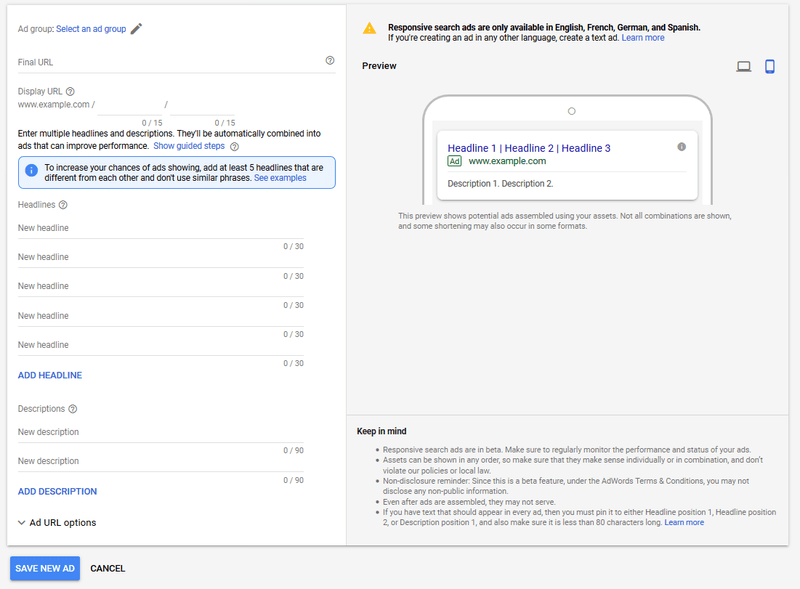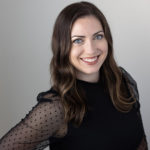How to Transition to Google Responsive Search Ads
The latest wave of changes from Google could potentially rock your paid search flow. Starting June 30th, 2022, Google is doing away with expanded text ads in favor of responsive search ads. Are you ready?
Two major things to know about the change:
- All text ads created before June 30th will continue to exist until the advertiser removes or deletes them
- Responsive search ads will be the only ad type available for standard search campaigns
Why the change? Here’s what Google has to say:
“The ways people search are constantly changing. In fact, 15% of search queries every day are new searches we’ve never seen before. As consumer trends shift and evolve, it’s more important than ever to make it easier for people to connect with your business through relevant and helpful ads.”
What Are Responsive Search Ads, Anyway?
Responsive search ads (RSAs) are types of Google pay-per-click ads that use artificial intelligence (AI) to learn about a consumer and optimize ad spending for the advertiser. These ads pull from a list of headlines and descriptions to link content with consumers’ search queries in real-time.
The machine learning component is the biggest difference between RSAs and expanded text ads. Expanded text ads require a manual approach, but do give advertisers complete control over the content displayed, which we know is best for highly-regulated verticals such as healthcare and financial services.
In contrast, RSAs organize headlines and descriptions dynamically based on what a user is searching for. Transitioning from text ads to responsive search ads will require marketers to relinquish some control over what content is displayed to users by trusting that the AI knows what’s best.
What is the Character Count on Responsive Search Ads?
RSA headlines are restricted to a maximum of 30 characters, and descriptions can be a maximum of 90 characters. The limited headline character count calls for CTAs that are clear and concise. The descriptions offer more room to elaborate, allowing you to provide additional context and compelling information to engage your target audience effectively.
How do Responsive Search Ads Work?
Responsive Search Ads operate by harnessing the power of machine learning and dynamic content optimization to deliver more effective and adaptable advertisements. Unlike static search ads, which rely on fixed headlines and descriptions, RSAs allow advertisers to input a range of headlines and descriptions into Google Ads. These elements are then mixed and matched automatically by Google’s algorithms to create tailored ad combinations in real-time, responding to the specific search queries and user profiles.
The core principle behind RSAs is experimentation and adaptability. Advertisers can provide up to 15 headlines and 4 descriptions, each with character limits. Google’s algorithms use this input to generate a multitude of possible ad variations. When a user enters a search query, the system selects the most relevant headline and description combination from the provided pool, aiming to maximize the ad’s appeal to the user and improve click-through rates.
One of the primary benefits of RSAs is their ability to evolve and optimize over time. Google’s machine learning continuously analyzes data from ad impressions and user interactions to identify which combinations perform best.
High-performing headlines and descriptions receive more exposure, while underperforming ones are gradually deprioritized. This ongoing optimization ensures that your ads remain competitive and effective as search trends and user preferences evolve.
Reasoning Behind Responsive Search Ads
Google is frequently evolving its algorithm and processes, and responsive search ads are an example of making search advertising better. The goal is to make it easier to show the consumer the right message in search.
One of the advantages of using responsive search ads is that they have built-in automation, an element Google describes as key to keeping pace with changing consumer search trends. RSAs combine creativity with machine learning capabilities to help show more relevant ads to more people. Google reports that advertisers who switch from expanded text ads to responsive search ads, using the same copy phrases, see an average of 7% more conversions at a similar cost per conversion.
Our Take On Responsive Search Ads
Diving into the data behind one client’s transition to RSAs last quarter, we’ve seen some interesting results.
To maintain as much balance as possible in the campaign, we rotated in new RSAs with the existing expanded text ads. This allowed the algorithm to start testing the new ads without completing nosediving the performance (also considered not “rocking the boat”). In the first two to three weeks, click-through rate (CTR) did decrease in the campaign, cost per lead (CPL) increased, and conversion rate (CVR) decreased. As with testing anything new, patience is a virtue.
In the second month of testing, RSAs began pulling ahead for CTR and we even saw expanded text ads start to dwindle down in activity on their own – a sign that Google Ads’ machine learning was acclimating to the new RSA format.
Since the switch to RSA ads almost three months ago, the campaign has rebounded nicely in regards to clicks, impressions, and conversions, and is now approaching pre-transition KPIs. More specifically, CTR has increased each month since then as well. In another client campaign where we launched RSAs, the CTR has decreased by just 3.5% in two weeks showing that a smaller rebound period may be possible.
We continue to monitor the effects RSAs have on our client’s results, but for now, we are reassured by the transition’s progress.
How to Create Google Responsive Search Ads
RSAs are made up of the following components:
- Up to 15 headlines with a 30-character limit (we recommend using at least 5)
- 4 descriptions with a 90-character limit
- 1 landing page
The step-by-step process in Google Ads Manager
Step 1: Build your ad groups
Step 2: Click on “Ads & Extensions”
Step 3: Select ‘responsive search ads’
Step 4: Input your headlines, descriptions, and landing page URL
Maximizing the Effectiveness of Responsive Search Ads
With expanded text ads, marketers could pair specific headlines with descriptions accordingly. But with RSAs, content is dynamically paired together in ways that AI thinks will lead to conversions for a searching consumer. This makes it tricky to guarantee every ad will include the right combination of information, including a call to action, so you’ll have to get creative.
Certain elements should remain consistent across all 15 headlines and 4 descriptions. These include tone, offered solutions to what the user may be searching for, and any levels of urgency (i.e. promotions with end dates, seasonal sales). Additionally, watch out for redundancy between the headlines and descriptions. The two should flow well together regardless of the combination presented to consumers without repeating the same information.
The best way to ensure your RSAs will bring in leads is to develop strategies that are hyper-segmented by your audience’s needs.
Responsive Search Ads Best Practices
The June 30th deadline is just around the corner! If your team needs guidance on how to transition from expanded text ads to responsive search ads in Google Ads, our Google Ads certified team is here to help.
Frequently Asked Questions
What is the difference between text ads and responsive search ads?
Text ads are created manually while responsive search ads (RSAs) include headlines and descriptions that are paired dynamically based on what a user is searching for.
What is the difference between dynamic and responsive search ads?
Responsive search ads are dynamic - there is no difference between these terms.
Are responsive search ads mobile optimized?
Yes, responsive search ads are optimized for mobile users.


